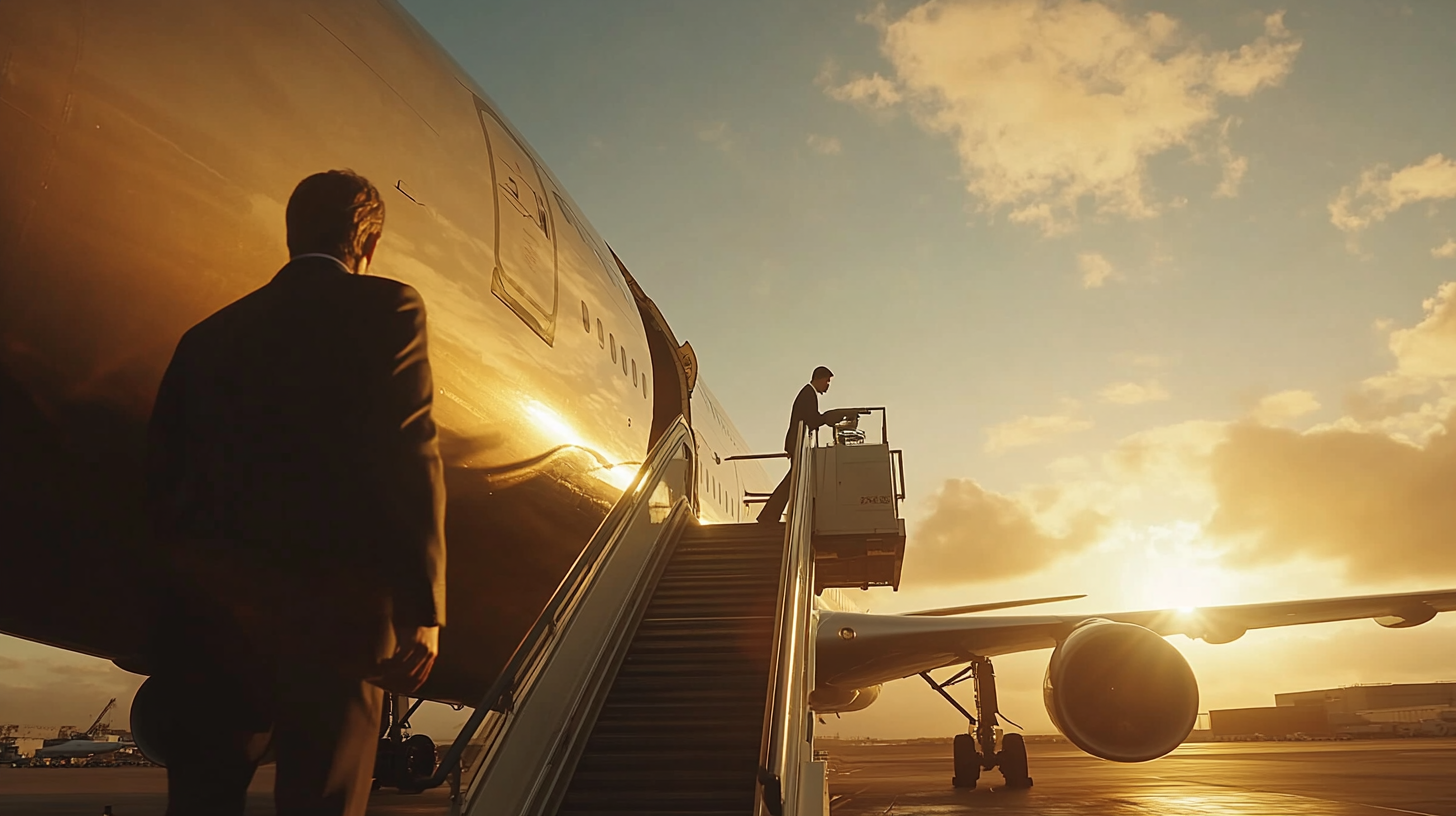Greening the Skies: The Future of Sustainable Business Travel

When business travel first bounced back in 2023, I noticed a profound shift in travelers’ mindsets. Industry reports showed 32% of consumers planning trips that year, and even now in 2025, experts say that wave of activity has continued upward. From my perspective, the heightened demand speaks volumes: 89% of travel professionals now prioritize eco-friendly practices, underscoring a genuine push to make corporate journeys greener and more responsible than ever.
I’ve toured corporate hubs where sustainability is woven into the decision-making process. Many companies continuously track trip-related carbon metrics to assess their footprint over time. A recent study by the Global Business Travel Association (GBTA) also suggests that most major organizations now include environmental criteria in their performance reviews, recognizing eco-innovation as a critical facet of modern travel programs. During my own booking experiences, I’ve seen how these metrics help guide smart decisions, from seat selection to airport transfers.
Rising Demand for Eco-Friendly Business Travel

In my travels, I’ve observed that today’s business traveler cares deeply about tangible impact. It’s not enough just to offset emissions; there’s a real desire for transparent, high-quality data on everything from flight efficiency to plastic use in corporate accommodations. According to industry data from the GBTA, this new wave of responsibility is fueling competition among airlines and hotels to meet evolving standards.
Yet the appetite for eco-friendly solutions isn’t just about personal preferences. Organizations recognize that reducing their environmental footprint yields competitive advantages in terms of public perception, employee satisfaction, and cost savings. I’ve interviewed executives who emphasize that a solid environmental track record often helps them attract top-tier talent—travelers who choose employers aligned with greener values.
The biggest challenge I’ve noticed is finding reliable information that compares the impact of different journey factors. Some carriers disclose their fuel efficiency, while others share average carbon outputs per seat. Despite the proliferation of these metrics, travelers still need consistent data verification. But once these figures are more uniform, I believe we’ll see an even greater surge in sustainable travel adoption across industries.
The 2025 Regulation Shift

In 2025, regulatory changes are coming thick and fast. Several global regions, including the EU, are pushing for transparent and detailed sustainability data from corporations. I’ve followed how compliance now rests on accurate emissions tracking, from flight sources to ground transportation. Where I see the real tipping point is the stricter enforcement against greenwashing: simply putting out flashy marketing won’t pass scrutiny. Meaningful action is the order of the day.
With the new rules, companies that previously favored quick, high-volume travel must demonstrate more conscious planning. There’s a sweeping sentiment that compliance can’t be an afterthought. A recent survey by Grayling indicates that over 70% of corporate travel managers are re-negotiating supplier contracts to address sustainability obligations. Many have begun aligning with reputable programs showcasing verified emissions data, such as those recommended by BCD Travel, to ensure full accuracy.
What I find especially interesting is how these regulations push organizations beyond minimal compliance. Some are adopting Sustainable Aviation Fuel (SAF) credits, while others champion direct route bookings for reduced carbon footprints. Often, I see travelers pivot to trains or electric ground transit when distances permit. It’s an era where policy meets practicality, and I believe that synergy can ultimately refine business travel at its core.
Key Strategies for Lower-Carbon Journeys

I often get asked: “How can frequent flyers put sustainability into practice without compromising productivity?” My advice is to first determine whether a trip is truly necessary at all. Virtual meetings, though no substitute for every face-to-face session, can minimize the need for short-haul flights. I’ve used this approach myself, reserving physical trips for events and negotiations that genuinely require in-person engagement.
When travel is indispensable, there are cost-effective methods to cut carbon. Booking direct flights is a significant step—a nonstop route versus multiple connections often slashes total emissions. Further, I’ve noticed that economy seating and booking on flights with higher load factors can reduce the per-passenger carbon footprint. A 2024 industry report from the International Air Transport Association (IATA) suggests that a fully occupied flight can lower per-traveler impact by nearly 30% compared to half-empty planes.
Ground transportation, in my view, deserves as much scrutiny. Whenever possible, I opt for electric taxis or public transit. I’ve even seen businesses experimenting with employee shuttle services that run on hybrid vehicles. By systematically comparing these choices and logging the results, companies can not only reduce emissions but also demonstrate clear environmental consciousness to stakeholders.
Partnering with Sustainable Suppliers

One of the most powerful shifts I’ve observed is the collaborative effort between corporations and eco-certified suppliers. Airlines, hotels, car rentals—you name it—are increasingly adopting measures like recycled materials, water conservation, and local sourcing partnerships. I recently spoke with a hotel manager in Amsterdam who shared how her property’s geothermal energy system halved annual CO2 output. Clients flock to them, knowing their stay helps lighten the environmental burden.
These alliances are often formalized through recognized certifications, like those offered by the Global Sustainable Tourism Council (GSTC). In my experience, seeing those logos on a booking page can make a huge difference in traveler confidence. It’s not only about feeling good—responsibly accredited suppliers also tend to track key metrics thoroughly, so travelers get real data on the environmental impact of their stay or transport.
In addition, local partnerships can bolster grassroots economies while shrinking the carbon footprint tied to supply chains. For instance, some businesses now rely on regionally produced furnishings or sponsor community-led conservation efforts. Experiences like these reinforce that sustainability need not be at odds with comfort or efficiency. Instead, it can be the backbone of a fresh, community-focused travel approach.
Measuring Impact and Avoiding Greenwashing

In my opinion, robust data is the linchpin of any credible sustainability strategy. The new reporting standards have made it much tougher for companies to gloss over incomplete figures. I recall a case study where a major airline faced public backlash for inaccurate carbon offset data—an eye-opening example of how swiftly reputations can unravel if the metrics don’t hold up to scrutiny.
Fortunately, improved data-sharing frameworks mean companies and travelers can track carbon footprints in near-real time. I’ve come across online platforms that integrate flight schedules, aircraft efficiency models, and lodging emissions. According to the GBTA and Grayling, a growing number of organizations are subscribing to these systems to produce authentic, verifiable metrics. This transparency, in turn, fosters genuine trust, which is priceless in any collaborative endeavor.
It’s also important for organizations to emphasize continuous improvement over ‘perfect’ sustainability. Providing regular updates—quarterly or even monthly—keeps everyone aligned on goals and aware of setbacks. I regard this as the key to avoiding greenwashing pitfalls: by openly documenting each milestone, acknowledging obstacles, and recalibrating benchmarks as needed.
Final Thoughts

Ultimately, I believe the future of sustainable business travel hinges on honest, data-driven engagement between companies, suppliers, and travelers themselves. As 2025’s regulations take root, thorough recordkeeping, transparent reporting, and collaborative innovations will define high-performing travel policies. The real magic, as I’ve witnessed, lies in transforming sustainability from a line-item budget concern into an integral aspect of corporate culture.
I see a world where business travelers view trip planning as more than just scheduling. It’s an active investment in environmental well-being, employee health, and brand integrity. By embracing green tech, forging alliances with eco-minded partners, and holding firm to verifiable results, we can elevate the role of business travel in forging a more resilient, climate-conscious future.
Amelia Yeaher’s Take
To me, sustainable business travel is an ongoing experiment. Each journey offers a chance to test new technologies, logistical strategies, and even how we perceive the purpose of travel itself. I’ve found that the more intentionally I plan my trips, the more I stick to meaningful connections and experiences.
Business travel doesn’t have to be purely transactional. Combining operational objectives with mindful practices redefines standard itineraries into ventures that uphold both productivity and the planet. It’s an ever-evolving creative process—and for me, that’s the best part.
Seat5A is where journey meets innovation.






